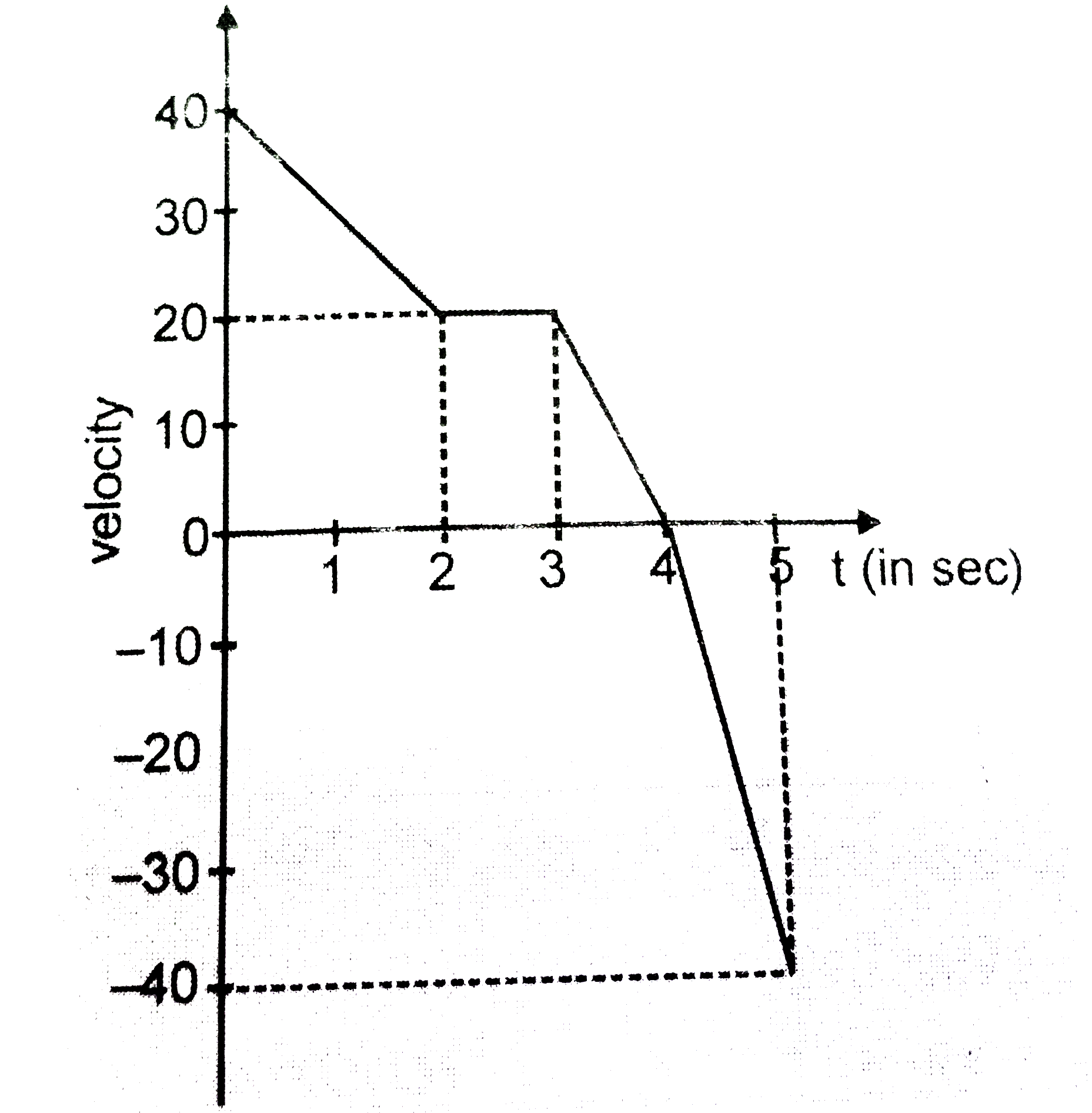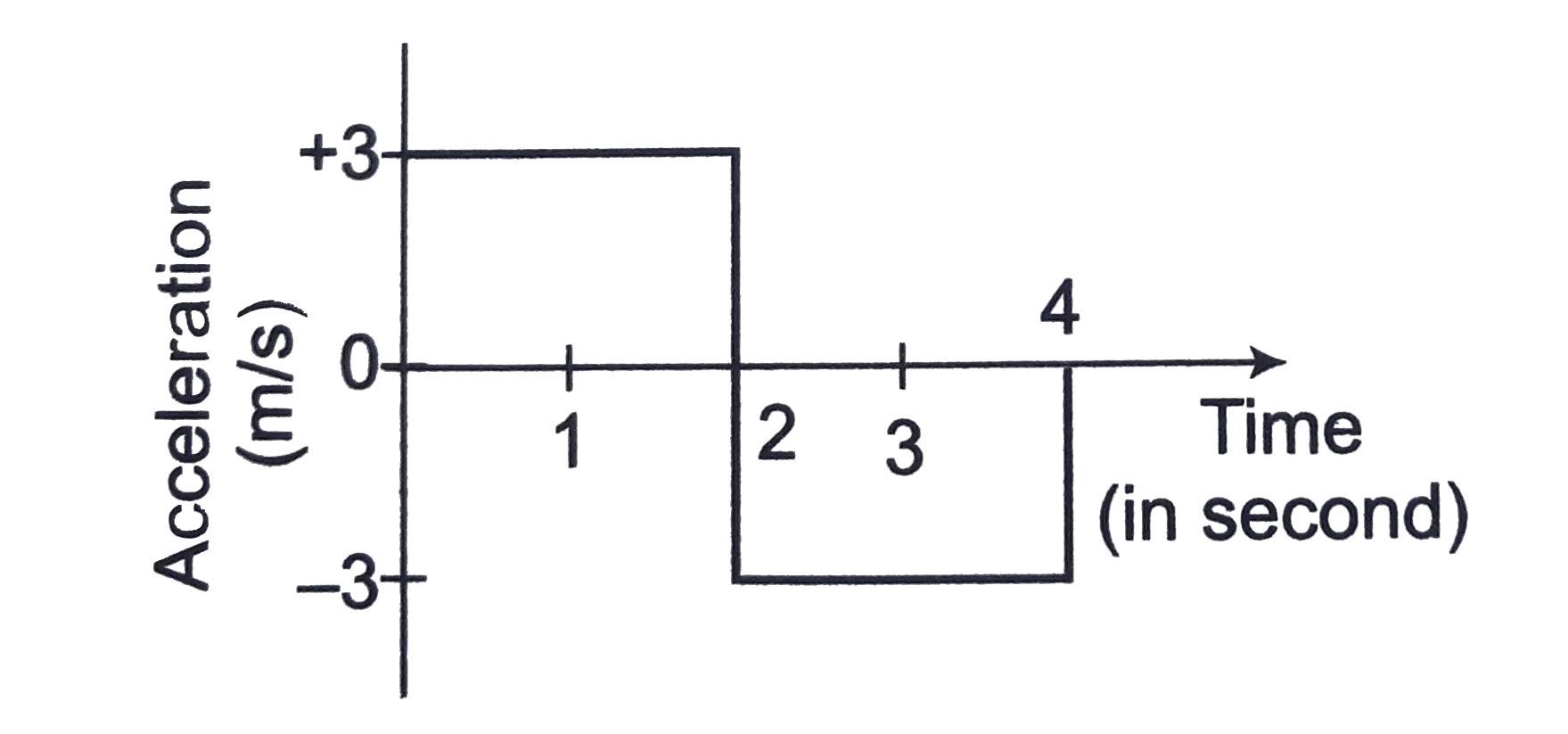A particie of mass 10 kg is driven by a machine that delivers a constant power of 20 watts. If particle starts from rest and moves along a straight line, then force (in Newton) on particle at time t(t>0) is
10√t
10√t
20√t
1√t
To find the force acting on a particle of mass 10 kg driven by a machine delivering constant power of 20 watts, we can follow these steps:
1. Understanding Power and Force Relationship:
The power P delivered to the particle is given by the formula:
P=F⋅v
where F is the force and v is the velocity of the particle.
2. Expressing Velocity in Terms of Time:
Since the particle starts from rest, we can express the velocity in terms of acceleration. The acceleration a can be expressed as:
a=dvdt
Thus, we can write:
F=m⋅a=m⋅dvdt
where m=10kg.
3. Substituting into the Power Equation:
Substituting the expression for force into the power equation, we get:
P=m⋅dvdt⋅v
Rearranging gives:
dvdt=Pm⋅v
4. Separating Variables:
We can separate the variables to integrate:
vdv=Pmdt
5. Integrating Both Sides:
Substituting P=20W and m=10kg:
vdv=2010dt⟹vdv=2dt
Integrating both sides:
∫vdv=∫2dt
This results in:
v22=2t+C
Since the particle starts from rest, when t=0, v=0, thus C=0:
v22=2t⟹v2=4t
6. Finding Velocity:
From the equation v2=4t, we can find v:
v=2√t
7. Finding Acceleration:
Now, we differentiate v with respect to t to find acceleration a:
a=dvdt=ddt(2√t)=2⋅12t−1/2=1√t
8. Finding Force:
Finally, we can find the force using F=m⋅a:
F=10⋅1√t=10√tN
Final Answer:
The force on the particle at time t is:
F=10√tN
The power P delivered to the particle is given by the formula:
P=F⋅v
where F is the force and v is the velocity of the particle.
Since the particle starts from rest, we can express the velocity in terms of acceleration. The acceleration a can be expressed as:
a=dvdt
Thus, we can write:
F=m⋅a=m⋅dvdt
where m=10kg.
Substituting the expression for force into the power equation, we get:
P=m⋅dvdt⋅v
Rearranging gives:
dvdt=Pm⋅v
We can separate the variables to integrate:
vdv=Pmdt
Substituting P=20W and m=10kg:
vdv=2010dt⟹vdv=2dt
Integrating both sides:
∫vdv=∫2dt
This results in:
v22=2t+C
Since the particle starts from rest, when t=0, v=0, thus C=0:
v22=2t⟹v2=4t
From the equation v2=4t, we can find v:
v=2√t
Now, we differentiate v with respect to t to find acceleration a:
a=dvdt=ddt(2√t)=2⋅12t−1/2=1√t
Finally, we can find the force using F=m⋅a:
F=10⋅1√t=10√tN
The force on the particle at time t is:
F=10√tN
Similar Questions
A body of mass 2 kg is driven by an engine delivering a constant power of 1 J /s. The body starts from rest and moves in a straight line. After 9 seconds, the body has moved a distance ( in m) ……….. .
View SolutionA particle starts motion from rest and moves along a straight line. Its acceleration-time graph is shown. Find out speed of particle at t=2s and at t=3s.

View Solution
Knowledge Check
A particle of mass m is driven by a machine that delivers a constant power k watts. If the particle starts from rest the force on the particle at time t is
A(√mk2)t−12B(√mk)t−12C(√2mk)t−12D(12√mk)t−12A particle of mass m is driven by a machine that delivers a constant power k watts. If the partilcle starts from rest the force on the particle at time t is
A√2mkt−1/2B12√mkt−1/2C√mk2t−1/2D√mkt−1/2A particle is moving with a constant speed along a straight line path. A force is not required to
AIncrease its speedBDecrease the momentumCChange the directionDKeep it moving with uniform velocity
A particle starts motion from rest and moves along a straight line. Its acceleration-time graph is shown. Find out speed of particle at t=2s and at t=3s.

View SolutionA particle is moving with a constant speed along a straight line path. A force is not requied to
View SolutionA particle starts from rest at t=0 and moves in a straight line with an acceleration as shown below. The velocity of the particle at t=3 s is

View SolutionA particle starts from rest at t=0 and moves in a straight line with an acceleration as shown below. The velocity of the particle at t=3 s is

View SolutionA particle starting from rest moves along a straight line with constant acceleration for this velocity displacement graph will have the form-
View Solution
